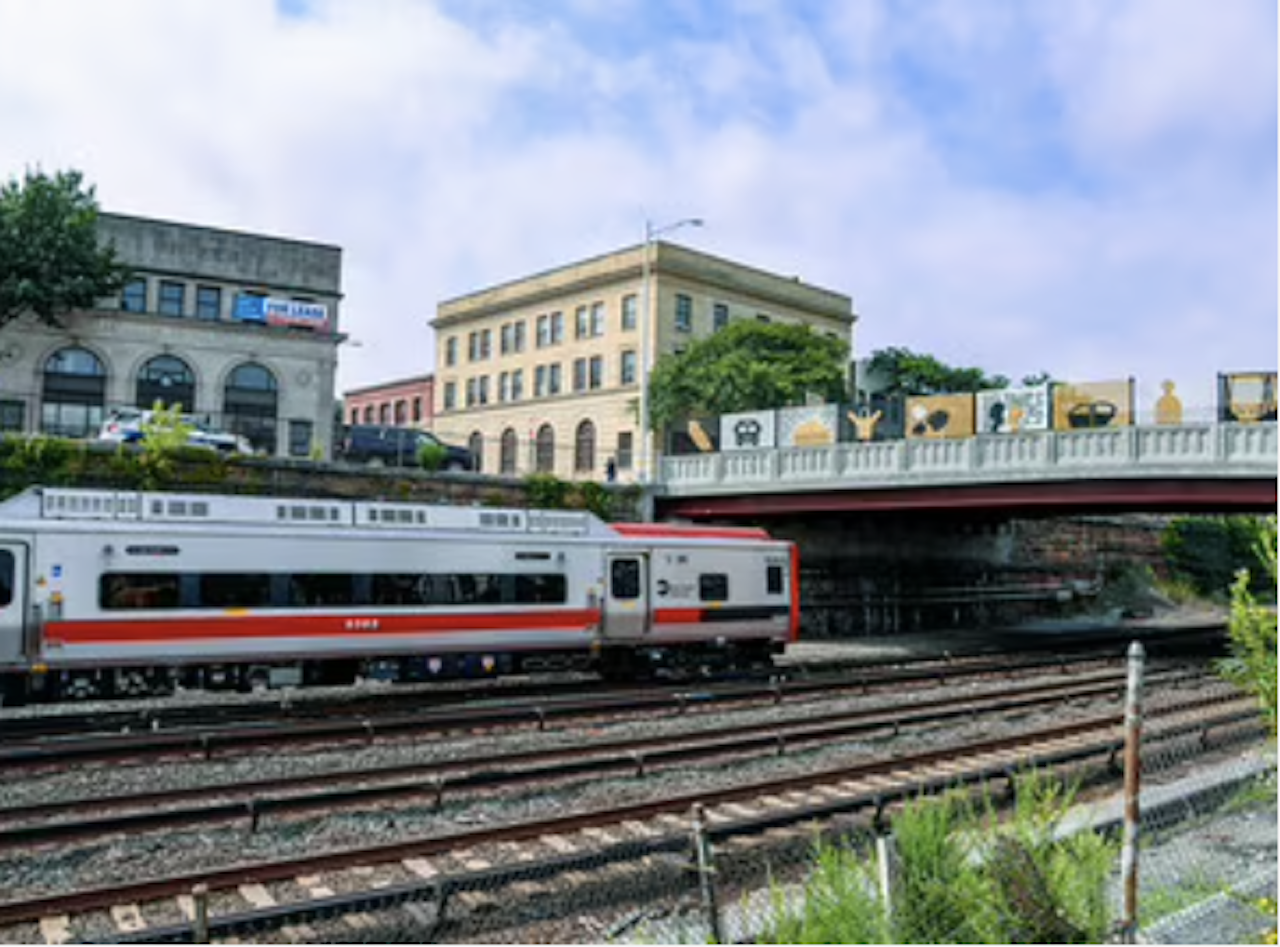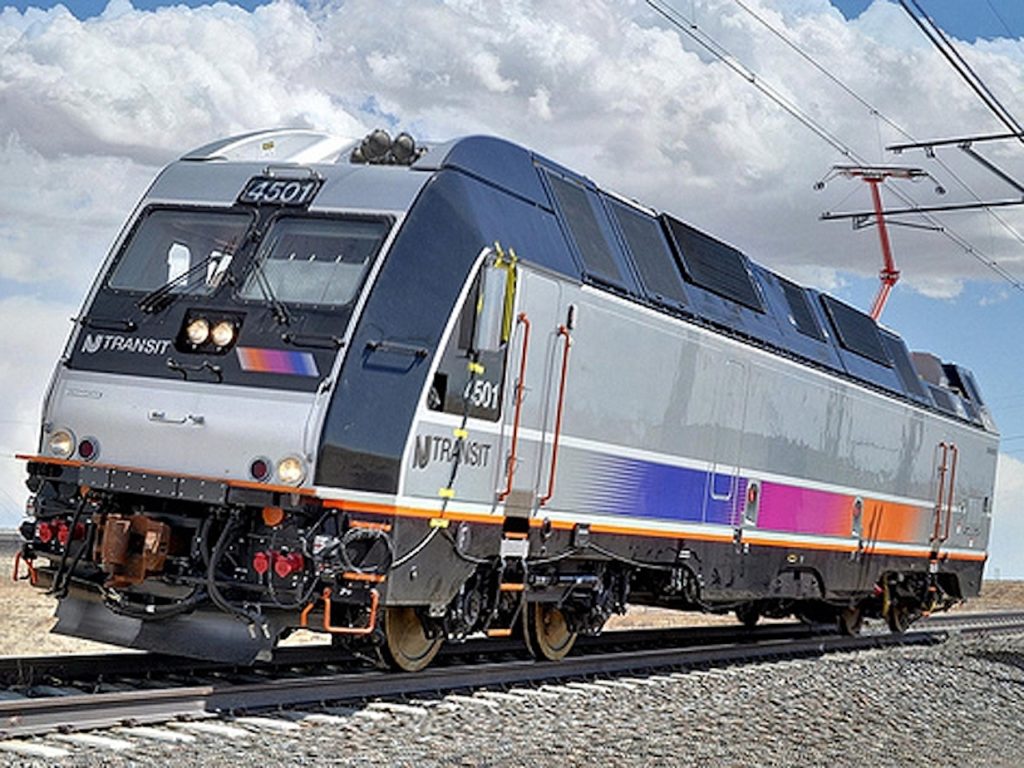
Transit Briefs: NYMTA, SEPTA, NJ Transit
Written by Carolina Worrell, Senior Editor
The New York Metropolitan Transportation Authority (MTA) announces record pandemic-era ridership on Metro-North Railroad and commits to slashing greenhouse gas (GHG) emissions 85% by 2040. Also, the Southeastern Pennsylvania Transportation Authority (SEPTA) releases Request for Proposals (RFP) to develop next generation of SEPTA Key; and NJ Transit faces a nearly $1 billion deficit in 2026.
NYMTA
The MTA announced that Metro-North Railroad ridership reached record pandemic-era ridership on April 18 with 194,549 riders, or 74% of the pre-pandemic average.
The milestone, MTA says, comes as the Long Island Rail Road (LIRR) has exceeded 200,000 riders on 16 days since Feb. 27, a threshold the railroad had only crossed twice during the first 57 days of 2023. During the seven days between April 9 and April 15, the LIRR carried an average of 168,726 daily customers, the best seven-day average since March 2020.
Metro-North and the LIRR rolled out fare offerings, including a 10% discount for monthly passes, and a 20-trip ticket tailored for the hybrid work schedule. The 20-trip ticket saves riders 20% on regular peak one-way fares. For rail riders traveling within the five boroughs, the City Ticket offers a reduced, flat fare of $5.00 for rail travel within New York City during off-peak hours on weekdays and on weekends. The new joint Metro-North LIRR Combo Ticket encourages regional travel between Metro-North and Long Island stations via Grand Central for only $8 more than the customer’s ticket to New York City.
“Record ridership means more and more people are realizing that commuter rail is the fastest and most efficient way to travel,” said Metro-North Railroad President and LIRR Interim President Catherine Rinaldi. “Our riders can count on public transit to get them to work, school, and everything the region has to offer this summer.”
Additionally, the MTA on April 20 committed to reducing the emissions that result from operations of the agency’s trains, buses and facilities by at least 85% by 2040 from a 2015 baseline, “an ambitious target that further positions the MTA as a leader in New York State’s efforts to fight climate change.”
At the same time, the MTA released a new analysis showing that the agency allows New Yorkers to avoid emitting 20 million metric tons of carbon annually, by keeping cars off the road, reducing congestion and enabling high-density neighborhoods. This massive avoidance of GHG emissions, MTA says, is the equivalent of the amount of carbon absorbed by a forest greater than the size of the state of Indiana or of keeping 4.5 million cars off the road.
Steps include:
- Updating Facilities: MTA will update legacy systems in shops, depots, yards, and stations, with energy efficient tech and low- or no-emissions systems as part of its capital program investments. As an example, the MTA will upgrade HVAC and lighting systems to be more energy efficient, identify opportunities to transition away from fossil fuel heating systems where feasible, and invest in solar panel installations on facility rooftops.
- Transitioning Fleets: The MTA will take steps to reduce emissions associated with all fleets. Notably, the MTA will transition its entire bus fleet of 5,800 buses to zero emission alternatives by 2040. In 2019, the MTA purchased 15 electric buses and installed 16 chargers at the MJ Quill Depot. Work on the path to a full transition by 2040 includes taking delivery of the pilot buses from our 60 all-electric bus order, awarding the procurement of 470 all-electric buses, equipping bus depots with new state-of-the-art charging infrastructure to support the MTA’s growing electric bus fleet, and expanding a depot-based workforce training program for zero-emissions.
- Increasing Energy Efficiency: By using energy management technologies, regenerative energy and power storage, and deploying on-site renewable energy installations. As an example, the MTA is already installing remote controls for third rail heaters to reduce energy usage, one of over 200 efficiency projects the MTA has already completed across its agencies.
In addition to reducing emissions, MTA says it is “committed to meeting the state’s goal for an equitable green energy transition by prioritizing efforts that impact disadvantaged communities.” Environmental Justice (EJ) communities that have historically been disproportionately impacted by pollution will be prioritized for the first electrified buses and routes, thereby reducing emissions that cause harmful and lasting health effects.
Today’s announcement, MTA says, “is the first step toward aligning the entire agency behind sustainability and climate resilience as core goals for the future under a Climate Sustainability Framework.” Formally incorporating the role of climate in the long-term planning process, the MTA says it is expecting to include sustainability and climate resiliency as key criteria this fall as it releases its Twenty-Year Needs Assessment, the key document that will guide the renewal, upgrade and expansion of New York’s subways, buses and commuter railroads, as well as its nine bridges and tunnels linking the five boroughs of New York City.
“There is no denying the urgent need to address the climate crisis, and the MTA is a double solution, first by providing New Yorkers with environmentally sustainable form of transportation, and second by finding innovative ways to reduce our own emissions,” said MTA Chair and CEO Janno Lieber. “Now more than ever, New Yorkers can feel confident that by riding the MTA they are doing their own part to reduce climate impacts.”
SEPTA
SEPTA announced April 20 that it is seeking proposals from experienced vendors to develop, implement and maintain its fare payment system as part of “SEPTA Key 2.0,” a next-generation, multimodal fare payment system intended to improve the customer experience.
According to the agency, SEPTA Key propelled SEPTA from an era of tokens and paper tickets to a reloadable, contactless chip card that offers a host of options for seamless travel and self-service flexibility. Now, more than a decade after its design, the current SEPTA Key data-processing software is due for an upgrade to meet the expectations of today—and tomorrow.

With SEPTA Key 2.0, riders can expect to see the following upgrades:
- New and better options to pay: Using a smartphone; contactless debit or credit card; or wearable device.
- Convenience of paying for multiple riders at the same time with the same fare media.
- Expanding the retail network to provide riders with more locations to purchase fares.
- Automatic, real-time updates to customer accounts and fare media.
- Integration with regional partners and third party-issued fare media.
- Flexible fare structure to make it easier for customers to obtain the best fare possible.
- Modernizing the website, mobile app, and communication channels.
An extensive customer outreach campaign was conducted to help guide the direction of SEPTA Key 2.0. SEPTA Key 2.0 is one of several initiatives underway at SEPTA to unify the system and will complement efforts, such as Trolley Modernization and Bus Revolution.
“SEPTA Key 2.0 will help ensure that we stay up to date with constantly evolving fare payment technology,” said SEPTA General Manager and CEO Leslie S. Richards. “This is a critical investment in our customers, and an important part of SEPTA Forward, SEPTA’s strategic plan.”
“We have learned a lot from the first phase of SEPTA Key,” added Richards. “Our goal is to build on the strengths of SEPTA Key by unifying fare policy and promoting affordability, equity, and ridership growth.”
Interested parties must submit their proposals by July 14. More information is available here.
NJ Transit
NJ Transit’s latest budget documents predict a nearly $1 billion annual budget shortfall expected by 2026, according to a Daily Record report.
According to the report, to address this, New Jersey Transportation Commissioner Diane Gutierrez-Scaccetti announced Wednesday that a “restructuring analysis will get under way ‘very quickly.’” The commissioner, who is also NJ Transit’s Board Chair, informed reporters of the plan Wednesday afternoon before the Board meeting.
According to the report, Gutierrez-Scaccetti said the restructuring analysis will focus on three main areas: “consolidating the corporate structure, looking at fares, and weighing ‘service realignments.’” Gutierrez-Scaccetti, who said that a mix of people from the Transportation Department and NJ Transit are leading the review, also emphasized that “all options are on table” and no decisions have been made yet.

The plan to restructure the agency was not announced at Wednesday’s Board meeting, according to the Daily Record report, but the Board “approved transmitting the agency’s fiscal year 2024 budget to Trenton for lawmakers to review before budget negotiations this June.”
According to the report, Board members Shanti Narra and Bob Gordon “raised concerns about the anticipated fiscal cliff and called on Gov. Phil Murphy and legislators to provide additional assistance to the agency through dedicated funding and to avoid putting the brunt of the budget woes on straphangers.”
Before the end of the meeting, the Board voted to approve Kiabi Carson to replace Cedrick Fulton as Vice Chair after he resigned over concerns about the fiscal health of the agency, according to the Daily Record report.
“We, as an administration, are going to look at how we deal with transit fares in an equitable way to ensure that we can use fares to help us close this gap,” Gutierrez-Scaccetti said, according to the report, adding that they will look at “how we best align service to our highest-demand customers and make certain that in doing so we don’t leave the customers on the lower-demand lines behind.”
Bailey Lawrence, a Murphy spokesman, said the agency will “responsibly and nimbly adapt” to the challenges.
“The Murphy administration will identify and evaluate an array of potential solutions that will improve NJ Transit’s fiscal stability and efficiency,” Lawrence said in a statement, according to the Daily Record report. “Throughout this realignment process, the quality of service and accessibility of our world-class public transportation system will remain our top priority.”
Following Wednesday’s Board Meeting, NJ Transit President and CEO Kevin Corbett, who has “maintained for years that it is essential to maintain service in order to entice people to return to public transportation,” said “We have to be prudent, live within our means and look at all things before we go asking people for money.”
As far as the corporate structure, Gutierrez-Scaccetti, as reported by the Daily Record, said, “We really need to streamline how that organization is laid out and transform the corporate structure to drive efficiencies.”
According to the report, news of seeking efficiencies and reorganizing comes as the agency is finalizing a lease for a new corporate headquarters at 2 Gateway in Newark that would “increase its office footprint by more than 20% and move the staff to one of the city’s more expensive office buildings.”
According to the Daily Record report, the Murphy administration, agency officials and its consultant, McKinsey, “overestimated during the last three budget cycles how many people would return to riding trains, buses and light rail after the COVID pandemic—and therefore over-budgeted how much revenue from ticket sales the agency would pocket.”
Wednesday’s budget documents, according to the report, show the agency’s farebox revenue is expected to “fall short by $30 million this fiscal year when compared with what was first budgeted in July, indicating that people aren’t returning to public transportation as quickly or fully as the agency hoped.”
Since 2020, according to the Daily Record report, the agency has used federal COVID aid to” plug those farebox gaps, but it’s burning through that cash faster than planned.” Last year, the agency was forced to use $75 million more in COVID aid than it originally forecast. To close budget shortfalls, it also diverted an additional $70.2 million in funds from capital to operating to balance its budget for fiscal year 2022, according to the report.
By 2026, NJ Transit’s federal COVID relief money is expected to run out.
In fact, the Daily Record reports, agency officials are now predicting that there will be “a $119 million budget gap in fiscal year 2025 and a $917.8 million shortfall in fiscal year 2026. Last year, there was no prediction of a shortfall in 2025 and the gap in 2026 was estimated at $842.6 million.”



